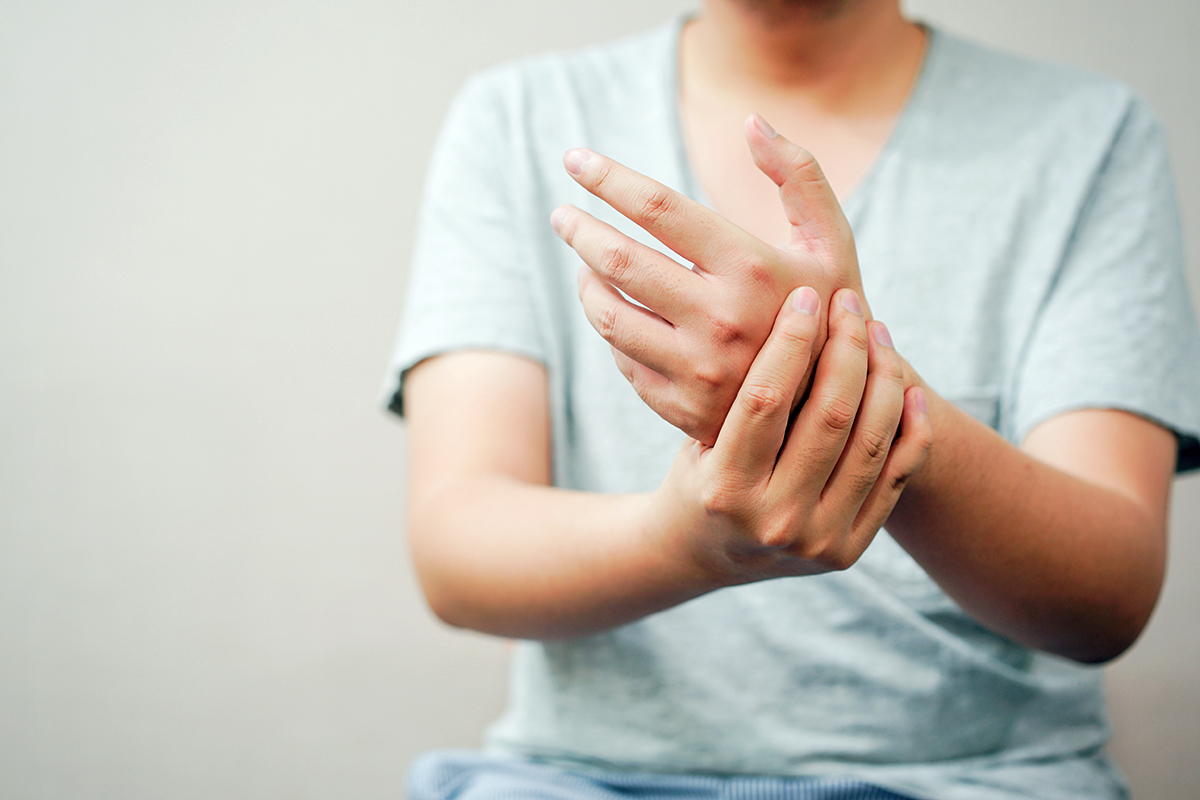
February 15, 2021 at 8:00 am · drsahai · 0 comments
Hand Problems Associated with Hand Pain
You do a lot with your hands. So, it is not uncommon for hand injuries or hand problems to occur. Having hand pain can be a big problem for you.
Many bones, muscles, and ligaments make up each hand. This allows for all the movement and dexterity hands can do. The major types of bones in your hands are:
- Phalanges. These are the fourteen finger bones. Each finger has three phalanges, and the thumb has two.
- Metacarpals. The metacarpals are the 5 bones that make up the middle section.
- Carpals. The carpal bones are 8 bones that make up the wrist and are connected to the arm bones.
We move our hands by contracting our muscles. And the ligaments bind the hand joint. However, sheaths surround and protect part of the fingers.
Common Hand Problems
Hand problems can cause pain. They can also interfere with daily activities. The most common types of hand pain are as follows:
Arthritis
Arthritis is inflammation of the joint as the cartilage wears down. It can occur in all parts of the hand. In fact, it is super painful.
Rheumatoid arthritis is a type of arthritis. Joints throughout the body are affected, and pain is often very severe. In the hands, the wrist and fingers are mostly affected. The hand joints will become swollen, and reduced hand movement occurs.
Also, see: Understanding Rheumatoid Arthritis Progression
Osteoarthritis
Osteoarthritis is a degenerative condition and is very common. This disease is caused by natural wear and tear. However, it can also develop after an injury. Men and women are equally affected by osteoarthritis. You can have either primary generalized osteoarthritis or erosive osteoarthritis.
The base of the thumb and finger joints are affected. The enlarged joints make it hard to perform even the simplest tasks. The signs of osteoarthritis include:
- Swelling and stiffness
- Loss of finger strength
- Reduced handgrip
- Pain at the base of the thumb
- Bony nodules at finger joints
Osteoarthritis can be treated using the following methods:
- Non-steroidal anti-inflammatory medications
- Wearing splints
- Heat application
- Ice to reduce swelling
- Rest
When these do not work, cortisone injections can help relieve pain. Surgery is only considered as the last restart.
Carpal Tunnel Syndrome
Carpal tunnel syndrome involves compression of the median nerve. The nerve passes through the wrist via the carpal tunnel. In fact, specific movements are known to pinch the nerve. The nerve supplies motor and sensory function to fingers. When compressed, pain and other symptoms can develop, such as:
- Trouble gripping items
- Numbness
- Pins and needles feeling
- Swollen fingers
- Tingling near the thumb and index finger
Treatment for carpal tunnel syndrome focuses on relieving nerve compression. Therefore, a splint can hold the wrist in a better position. However, medications can also help reduce swelling. Surgery is an option in cases of severe nerve damage too. Most often, though, making ergonomic changes can help the most. Without treatment, carpal tunnel syndrome can get worse.
Also, see: Tips for Carpal Tunnel Relief
Ganglion Cysts
Ganglion cysts are common fluid-filled tumors that form for no apparent reason. However, ganglion cysts are benign and will occur if herniation forms in a joint. There is a sac at every joint that can become filled. The valve that controls fluid flow can have drainage issues, though. So, the sac fills based on certain hand motions.
Ganglion cysts typically form at the back of the hand. There can be a pain in the wrist or localized swelling. The cyst will be smooth and may be tender to touch. A ganglion cyst can look like other medical conditions. So, be sure to have your doctor take a look.
Treatment is only required when the cyst grows. Or when it interferes with hand function. Your doctor will advise rest, pain medications, and a splint. You may also need cortisone injections or surgery.
Tendon Problems
There are two common tendon problems in the hand, tendonitis, and tenosynovitis. Tendonitis is inflammation of a tendon that causes pain. This is common in the wrist and fingers. However, tenosynovitis is inflammation of the tendon sheath lining.
The thesis sheath surrounds the tendon. Overuse or injury can cause inflammation to the sheath and tendon, causing tenosynovitis. This condition, however, can also be related to certain diseases.
Common Hand Pain Disorders
The most common disorders for tendons are:
Lateral epicondylitis (tennis elbow.) Lateral epicondylitis occurs when the tendons that allow the wrist to bend back are damaged. When tennis elbow happens, pain is felt along the back of the elbow and arm.
Medial epicondylitis (golfer’s elbow.) Medial epicondylitis occurs when tendons that bend the wrist forward are damaged. Pain is felt from elbow to wrist on the forearm when experiencing a golfer’s elbow.
Rotator cuff tendonitis. The shoulder capsule and tendons become inflamed when you experience rotator cuff tendinitis.
De Quervain’s tenosynovitis. De Quervain’s is the most common form of tenosynovitis. This type of tenosynovitis occurs when the tendons and sheaths in the thumb become swollen.
Trigger finger. Despite the name, the condition trigger finger affects both the fingers and the thumb. When the condition trigger finger occurs, the tendon sheath becomes inflamed and thick. It becomes difficult to move your fingers smoothly. They may even become locked suddenly.
Treating tendon issues can involve modified activity and a splint. So, Ice and NSAIDs can help with pain and swelling. In more severe cases, however, steroid injections can be used. And, surgery is always the last consideration.
So, it’s important to have a specialist look at your hand problems. If you are looking for a top hand specialist we have you covered. Give us a call at 888-409-8006.
